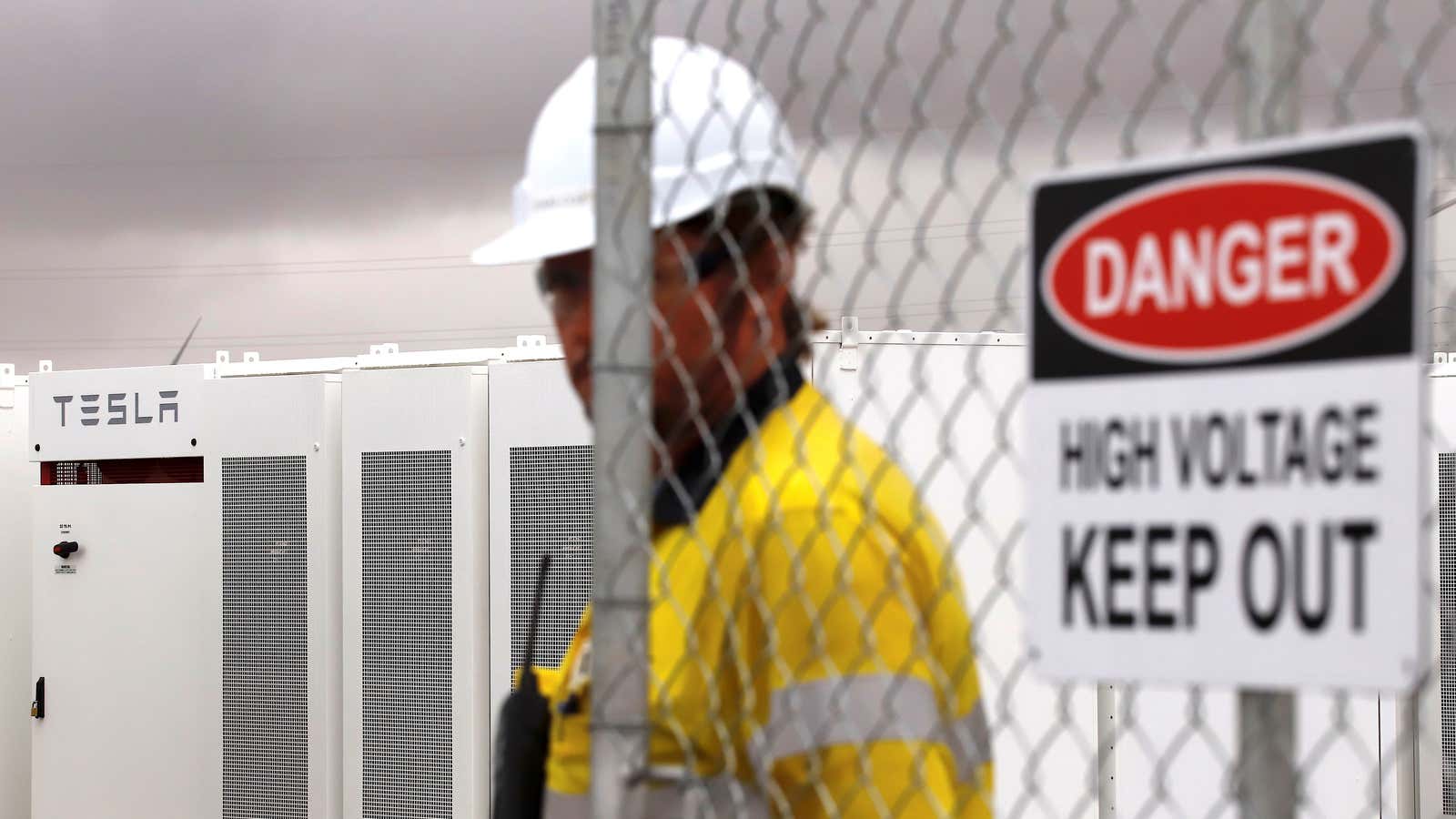In 2019, Tesla introduced the Megapack, a battery the size of a shipping container designed to kill coal- and gas-fired “peaker” power plants.
Peaker plants sit idle for most of the day, but fire up to provide extra energy whenever demand for electricity spikes and the power grid can’t keep up. Tesla pitched Megapack batteries as a more climate-friendly alternative to peaker plants because they can store renewable energy when electricity demand is low, and then pump power back onto the grid when demand peaks.
Over the past year, Tesla has stepped up the pace of its big battery projects—and the Megapack is starting to live up to its peaker-plant-killing promise.
Tesla built its biggest battery installation ever in April, which will help California power utility Pacific Gas and Electric replace natural gas plants it plans to phase out starting in 2023. Later this year, Tesla will build its second and third biggest-ever battery projects to shut down the last coal plant in Hawaii and help replace one of the most carbon-polluting coal plants in New Mexico.
Tesla is accelerating utility-scale battery construction
Megapacks are utility-scale batteries, meaning a power company can use them as a backup to store electricity for hundreds or thousands of customers. Each Megapack battery can store three megawatt-hours (MWh) of electricity, enough to power about 100 US homes for a day. Tesla’s biggest battery installation involves 256 Megapack battery units with a combined storage capacity of 730 MWh, enough to power about 25,000 US homes for a day or nearly 600,000 homes for an hour.
Tesla’s pace of utility-scale battery construction increased nearly 10-fold in 2021, according to the Tesla Megapack Tracker, an independent database run by software engineer Lorenz Gruber, who monitors battery projects with at least five megawatt-hours of storage capacity. If Tesla’s Hawaii and New Mexico battery projects come online later this year as expected, Tesla will break last year’s installation record by at least 50%.
Tesla isn’t the only company building utility-scale batteries. Rival battery makers including LG and Samsung, along with local power utilities, have built energy storage projects at similar scale. Meanwhile, Chinese firms are ramping up battery construction, and the country’s dominant utility, State Grid, has set aggressive goals to surpass the US in battery storage by 2030.
The race to build big batteries could build fortunes for the companies that come to dominate the industry—and will play a crucial role in weaning the world off of fossil fuels.
